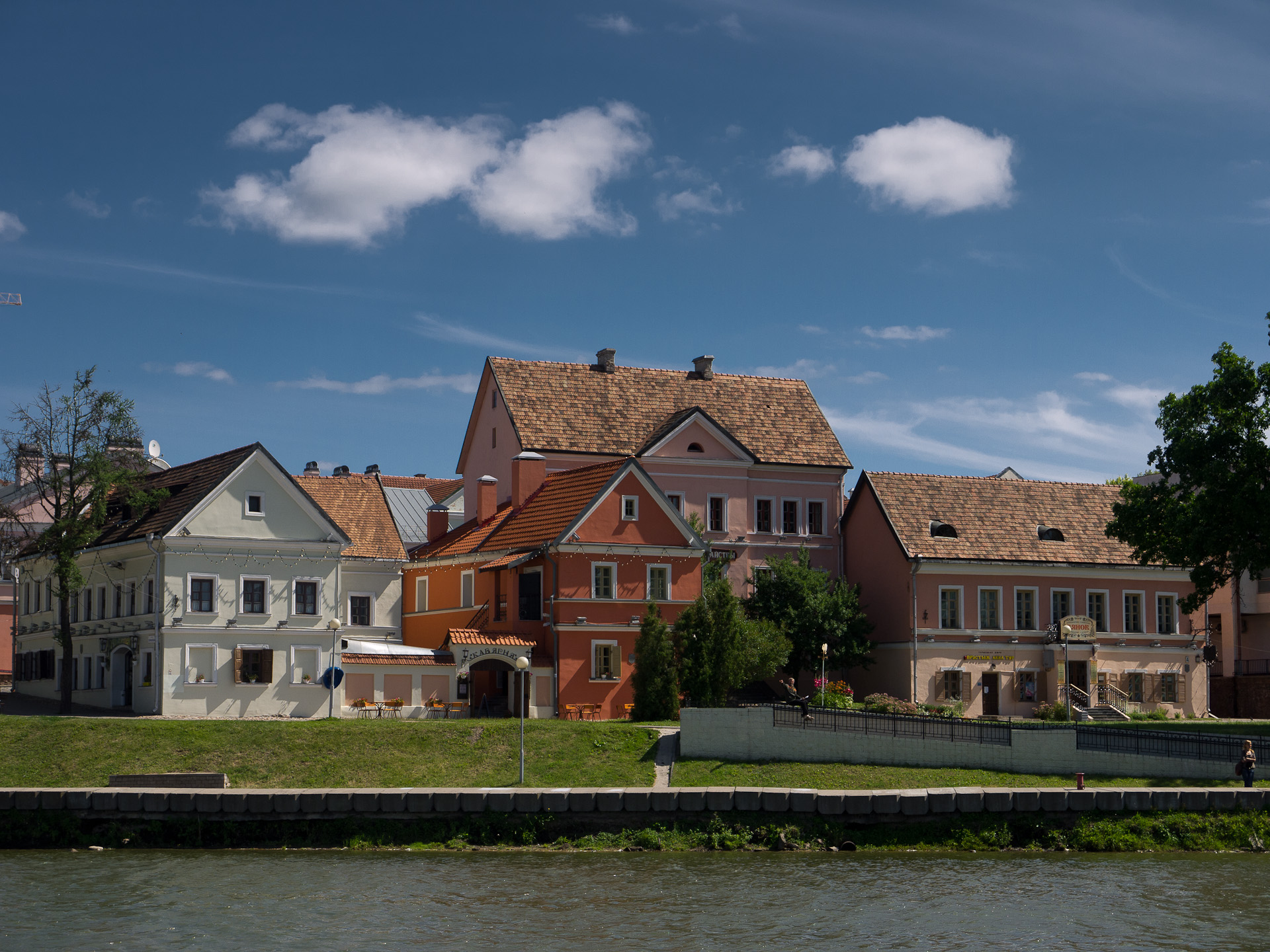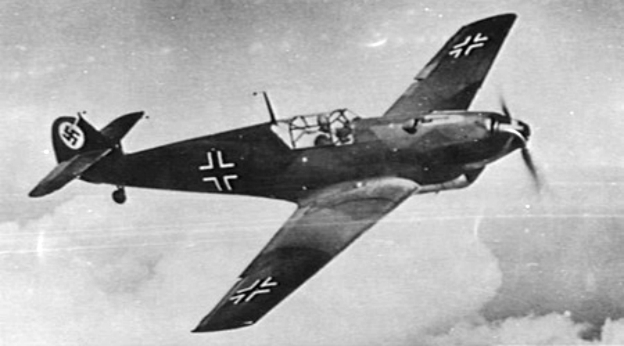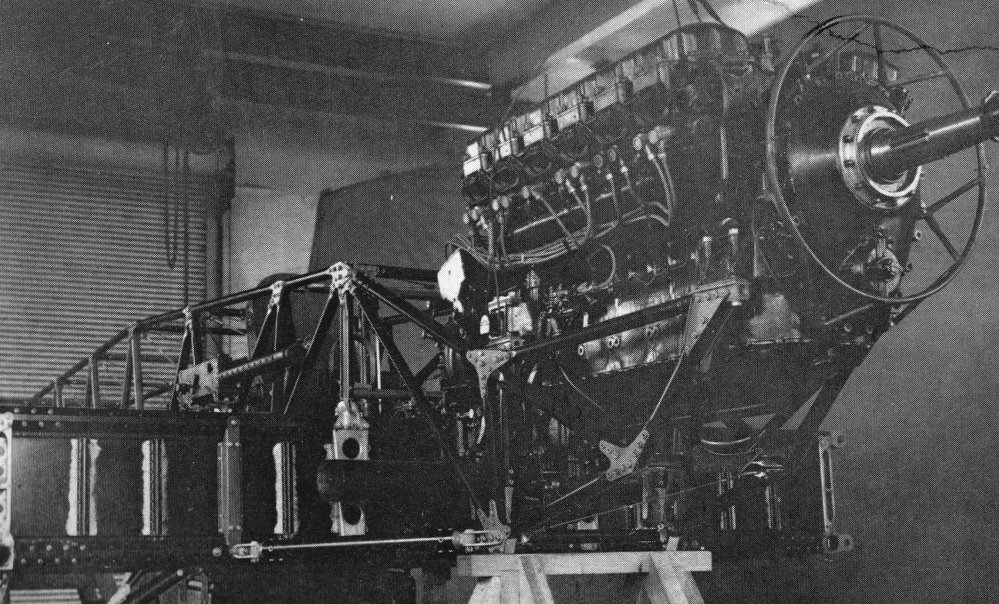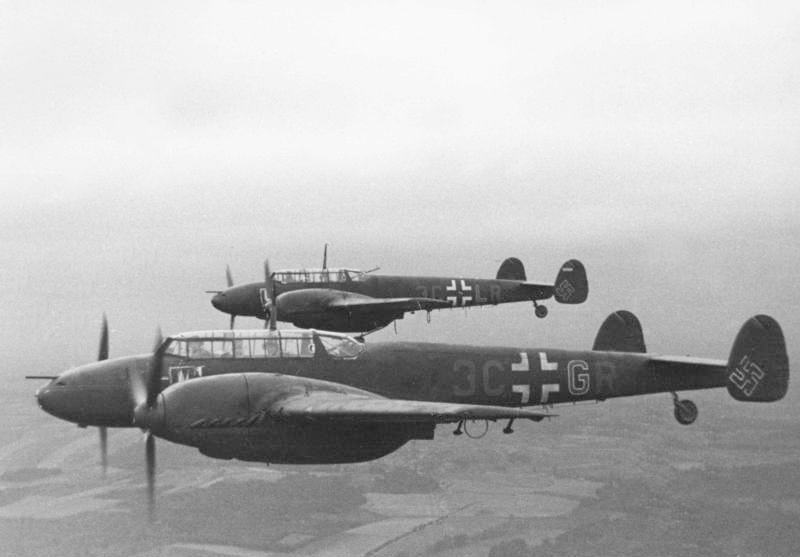|
Eduard Tratt
Eduard Tratt (24 February 1919 – 22 February 1944) was a ''Luftwaffe'' fighter, test pilot and flying ace of World War II. Major Eduard Tratt was the highest scoring Zerstörer pilot of the war with 38 victories and ''Gruppenkommandeur'' of II./Zerstörergeschwader 26 (ZG 26). He was also a recipient of the Knight's Cross of the Iron Cross with Oak Leaves. The Knight's Cross of the Iron Cross and its higher grade Oak Leaves was awarded to recognise extreme battlefield bravery or successful military leadership. On 20 April 1944 he was posthumously promoted to the rank of Major. Career Tratt was born on 24 February 1919 in Würzburg. By 1937 Tratt was serving as a Fahnenjunker in the Luftwaffe. At the beginning of World War II, Leutnant Tratt was serving in 1 Staffel, '' Zerstörergeschwader 1'' (ZG 1), flying the Messerschmitt Bf 110 heavy twin-engine fighter. After participation in Polish campaign Tratt took part in the Battle of France, and on 1 June 1940 claimed 3 Hawker ... [...More Info...] [...Related Items...] OR: [Wikipedia] [Google] [Baidu] |
Würzburg
Würzburg (; Main-Franconian: ) is a city in the region of Franconia in the north of the German state of Bavaria. Würzburg is the administrative seat of the '' Regierungsbezirk'' Lower Franconia. It spans the banks of the Main River. Würzburg is situated approximately east-southeast of Frankfurt am Main and approximately west-northwest of Nuremberg (). The population (as of 2019) is approximately 130,000 residents. The administration of the ''Landkreis Würzburg'' ( district of Würzburg) is also located in the town. The regional dialect is East Franconian. History Early and medieval history A Bronze Age (Urnfield culture) refuge castle, the Celtic Segodunum,Koch, John T. (2020)CELTO-GERMANIC Later Prehistory and Post-Proto-Indo-European vocabulary in the North and West p. 131 and later a Roman fort, stood on the hill known as the Leistenberg, the site of the present Fortress Marienberg. The former Celtic territory was settled by the Alamanni in the 4th or 5t ... [...More Info...] [...Related Items...] OR: [Wikipedia] [Google] [Baidu] |
Gruppenkommandeur
''Gruppenkommandeur'' is a Luftwaffe position (not rank), that is the equivalent of a commander of a group or wing in other air forces. A ''Gruppenkommandeur'' usually has the rank of Major or '' Oberstleutnant'' (Lieutenant Colonel), and commands a '' Gruppe'', which is a sub-unit of a ''Geschwader This is a list of words, terms, concepts, and slogans that have been or are used by the German military. Ranks and translations of nicknames for vehicles are included. Also included are some general terms from the German language found frequently i ...''. A ''Gruppe'' usually consists of three or four '' Staffeln'' (each of which is commanded by a '' Staffelkapitän''). See also * Organization of the Luftwaffe (1933–1945) Military ranks of Germany Luftwaffe Air force appointments {{aviation-stub ... [...More Info...] [...Related Items...] OR: [Wikipedia] [Google] [Baidu] |
Minsk
Minsk ( be, Мінск ; russian: Минск) is the capital and the largest city of Belarus, located on the Svislach (Berezina), Svislach and the now subterranean Nyamiha, Niamiha rivers. As the capital, Minsk has a special administrative status in Belarus and is the administrative centre of Minsk Region (oblast, voblast) and Minsk District (Raion, raion). As of January 2021, its population was 2 million, making Minsk the Largest cities in Europe, 11th most populous city in Europe. Minsk is one of the administrative capitals of the Commonwealth of Independent States (CIS) and the Eurasian Economic Union (EAEU). First documented in 1067, Minsk became the capital of the Principality of Minsk before being annexed by the Grand Duchy of Lithuania in 1242. It received town privileges in 1499. From 1569, it was the capital of the Minsk Voivodeship, an administrative division of the Polish–Lithuanian Commonwealth. It was part of a region annexed by the Russian Empire in 1793, as a c ... [...More Info...] [...Related Items...] OR: [Wikipedia] [Google] [Baidu] |
Białystok
Białystok is the largest city in northeastern Poland and the capital of the Podlaskie Voivodeship. It is the tenth-largest city in Poland, second in terms of population density, and thirteenth in area. Białystok is located in the Białystok Uplands of the Podlachian Plain on the banks of the Biała River, by road northeast of Warsaw. It has historically attracted migrants from elsewhere in Poland and beyond, particularly from Central and Eastern Europe. This is facilitated by the nearby border with Belarus also being the eastern border of the European Union, as well as the Schengen Area. The city and its adjacent municipalities constitute Metropolitan Białystok. The city has a warm summer continental climate, characterized by warm summers and long frosty winters. Forests are an important part of Białystok's character and occupy around (18% of the administrative area of the city) which places it as the fifth-most forested city in Poland. The first settlers arrived in th ... [...More Info...] [...Related Items...] OR: [Wikipedia] [Google] [Baidu] |
Schnellkampfgeschwader 210
''Schnellkampfgeschwader'' 210 (SKG 210) was a Luftwaffe fast-bomber wing during the Second World War. The unit was created in April 1941 and absorbed by the Zerstörergeschwader 1 on 4 January 1942. Operational history SKG 210 had its origins in '' Erprobungsgruppe'' 210 (Test Wing 210), formed at Köln-Ostheim airfield under the command of Hptm. Walter Rubensdörffer in July 1940 as the official service test unit for the then-new Messerschmitt Me 210, the intended successor to the earlier Messerschmitt Bf 110. However, such were the delays in that aircraft's development that the unit was utilised to develop tactical and strategic practices required to operate the in-service Bf 110s in newer, fighter-bomber and ground-attack roles they were being adapted to. By the time the unit was re-designated I. Gruppe, Schnellkampfgeschwader 210 in April 1941 the unit was based at Abbeville, bombing Allied shipping and land-based targets. The unit then moved east to prepare for the att ... [...More Info...] [...Related Items...] OR: [Wikipedia] [Google] [Baidu] |
Messerschmitt Me 210
The Messerschmitt Me 210 was a German heavy fighter and ground-attack aircraft of World War II. Design started before the war, as a replacement for the Bf 110. The first examples were ready in 1939, but they proved to have unacceptably poor flight characteristics due to serious wing planform and fuselage design flaws. A large-scale operational testing program throughout 1941 and early 1942 did not cure the type's problems. The design entered limited service in 1942, but was soon replaced by the Messerschmitt Me 410 Hornisse, a further development of the Me 210. The failure of the Me 210's development program meant the '' Luftwaffe'' was forced to continue operating the Bf 110 after it had become outdated, despite mounting losses. Design and development Messerschmitt designers had started working on an upgrade of the Bf 110 in 1937, before the production version of the Bf 110 had even flown. In late 1938, the Bf 110 was just entering service, and the RLM started looking ahea ... [...More Info...] [...Related Items...] OR: [Wikipedia] [Google] [Baidu] |
Zerstörergeschwader 2
''Zerstörergeschwader'' 2 (ZG 2—2nd Destroyer Wing) (lit. ''destroyer wing'') was a Luftwaffe heavy/destroyer Fighter Aircraft-wing of World War II. Formation ''Zerstörergeschwader'' 2 (ZG 2—2nd Destroyer Wing) was formed with one '' Gruppe'' (group) before the war. Initially, no '' Geschwaderstab'' (headquarters unit), II. ''Gruppe'' (2nd group) nor III. ''Gruppe'' (3rd group) was formed. I. ''Gruppe'' (1st group) was formed by renaming I(l). ''Gruppe'' (1st group) of ''Jagdgeschwader'' 137 (JG 137—137th Fighter Wing) to I. ''Gruppe'' of ''Zerstörergeschwader'' 231 (ZG 231—231st Destroyer Wing) on 1 November 1938 flying the Messerschmitt Bf 109 D-1 single engine fighter. On 1 May 1939, I. ''Gruppe'' of ZG 231 became I. ''Gruppe'' of ZG 2. During this entire time, the ''Gruppe'' was commanded by ''Hauptmann'' Johannes Gentzen. This unit was initially based at Bernburg until it was moved to Groß Stein, present-day Kamień Śląski i ... [...More Info...] [...Related Items...] OR: [Wikipedia] [Google] [Baidu] |
Dunkirk
Dunkirk (french: Dunkerque ; vls, label= French Flemish, Duunkerke; nl, Duinkerke(n) ; , ;) is a commune in the department of Nord in northern France.Commune de Dunkerque (59183) INSEE It lies from the Belgian border. It has the third-largest French harbour. The population of the commune in 2019 was 86,279. Etymology and language use The name of Dunkirk derives from West Flemish '' or ' dun' and 'church', thus 'church in the dune ...[...More Info...] [...Related Items...] OR: [Wikipedia] [Google] [Baidu] |
Hawker Hurricane
The Hawker Hurricane is a British single-seat fighter aircraft of the 1930s–40s which was designed and predominantly built by Hawker Aircraft Ltd. for service with the Royal Air Force (RAF). It was overshadowed in the public consciousness by the Supermarine Spitfire during the Battle of Britain in 1940, but the Hurricane inflicted 60 percent of the losses sustained by the Luftwaffe in the campaign, and fought in all the major theatres of the Second World War. The Hurricane originated from discussions between RAF officials and aircraft designer Sir Sydney Camm about a proposed monoplane derivative of the Hawker Fury biplane in the early 1930s. Despite an institutional preference for biplanes and lack of interest by the Air Ministry, Hawker refined their monoplane proposal, incorporating several innovations which became critical to wartime fighter aircraft, including retractable landing gear and the more powerful Rolls-Royce Merlin engine. The Air Ministry ordered Hawk ... [...More Info...] [...Related Items...] OR: [Wikipedia] [Google] [Baidu] |
Messerschmitt Bf 110
The Messerschmitt Bf 110, often known unofficially as the Me 110,Because it was built before ''Bayerische Flugzeugwerke'' became Messerschmitt AG in July 1938, the Bf 110 was never officially given the designation Me 110. is a twin-engine (Destroyer, heavy fighter), fighter-bomber (''Jagdbomber'' or ''Jabo''), and night fighter (''Nachtjäger'') developed in Nazi Germany in the 1930s and used by the Luftwaffe during World War II. Hermann Göring was a proponent of the Bf 110, believing its heavy armament, speed, and range would make the Bf 110 the Luftwaffe’s premier offensive fighter. Early variants were armed with two MG FF 20 mm cannon, four 7.92 mm (.312 in) MG 17 machine guns, and one 7.92 mm (.312 in) MG 15 machine gun for defence (later variants would replace the MG FFs with MG 151s and the rear gunner station would be armed with the twin-barreled MG 81Z). Development work on an improved type to replace the Bf 110 - the Messerschmitt Me 210 - began ... [...More Info...] [...Related Items...] OR: [Wikipedia] [Google] [Baidu] |
Zerstörergeschwader 1
''Zerstörergeschwader'' 1 (ZG 1—1st Destroyer Wing) (lit. ''destroyer wing'') was a Luftwaffe heavy/destroyer Fighter Aircraft-wing of World War II. Formation ''Zerstörergeschwader'' 1 (ZG 1—1st Destroyer Wing) was formed with two ''Gruppen'' (groups) before the war. Initially, no '' Geschwaderstab'' (headquarters unit) nor III. ''Gruppe'' (3rd group) was formed. I. ''Gruppe'' (1st group) was formed by renaming II(s). ''Gruppe'' (2nd group) of ''Jagdgeschwader'' 132 "Richthofen" (JG 132—132nd Fighter Wing) to I. ''Gruppe'' of ''Zerstörergeschwader'' 141 (ZG 141—141st Destroyer Wing) on 1 November 1938 flying the Messerschmitt Bf 109 single engine fighter. On 1 May 1939, I. ''Gruppe'' of ZG 141 became I. ''Gruppe'' of ZG 1. During this entire time, the ''Gruppe'' was commanded by ''Major'' Joachim-Friedrich Huth. This unit was initially based at Jüterbog- Damm until it was moved to Mackfitz, present-day Makowice in north-western Polan ... [...More Info...] [...Related Items...] OR: [Wikipedia] [Google] [Baidu] |
Leutnant
() is the lowest Junior officer rank in the armed forces the German-speaking of Germany (Bundeswehr), Austrian Armed Forces, and military of Switzerland. History The German noun (with the meaning "" (in English "deputy") from Middle High German «locum tenens» (in English "place holder") was derived from the French word about 1500. In most German-speaking armies it is the lowest officer rank (in German-speaking navies (English "Lieutenant at sea")). In the German Bundeswehr the ranks and belong to the rank group. In some other armed forces (such as the former National People's Army) there is the lower grade of Unterleutnant. From about 1500 until the middle of the 17th century the designation of was commonly used for any deputy to a commanding officer. So at the army level there was the appointment of (English "lieutenant-general"), at the regimental level there was that of (English "lieutenant-colonel"), and at the company level the was deputy to a (English "captai ... [...More Info...] [...Related Items...] OR: [Wikipedia] [Google] [Baidu] |








